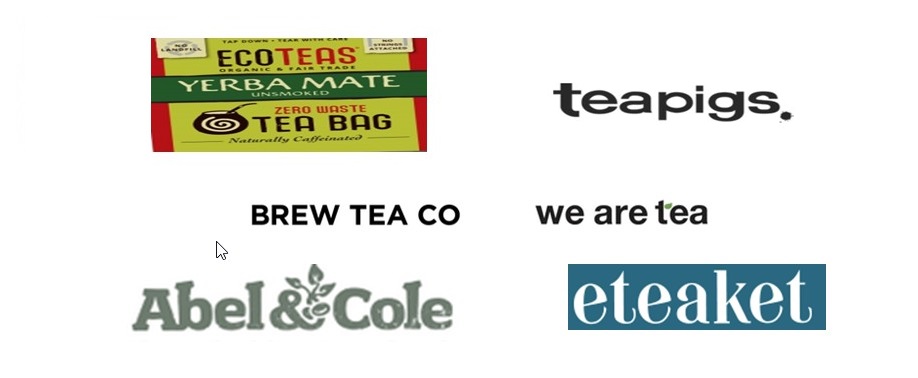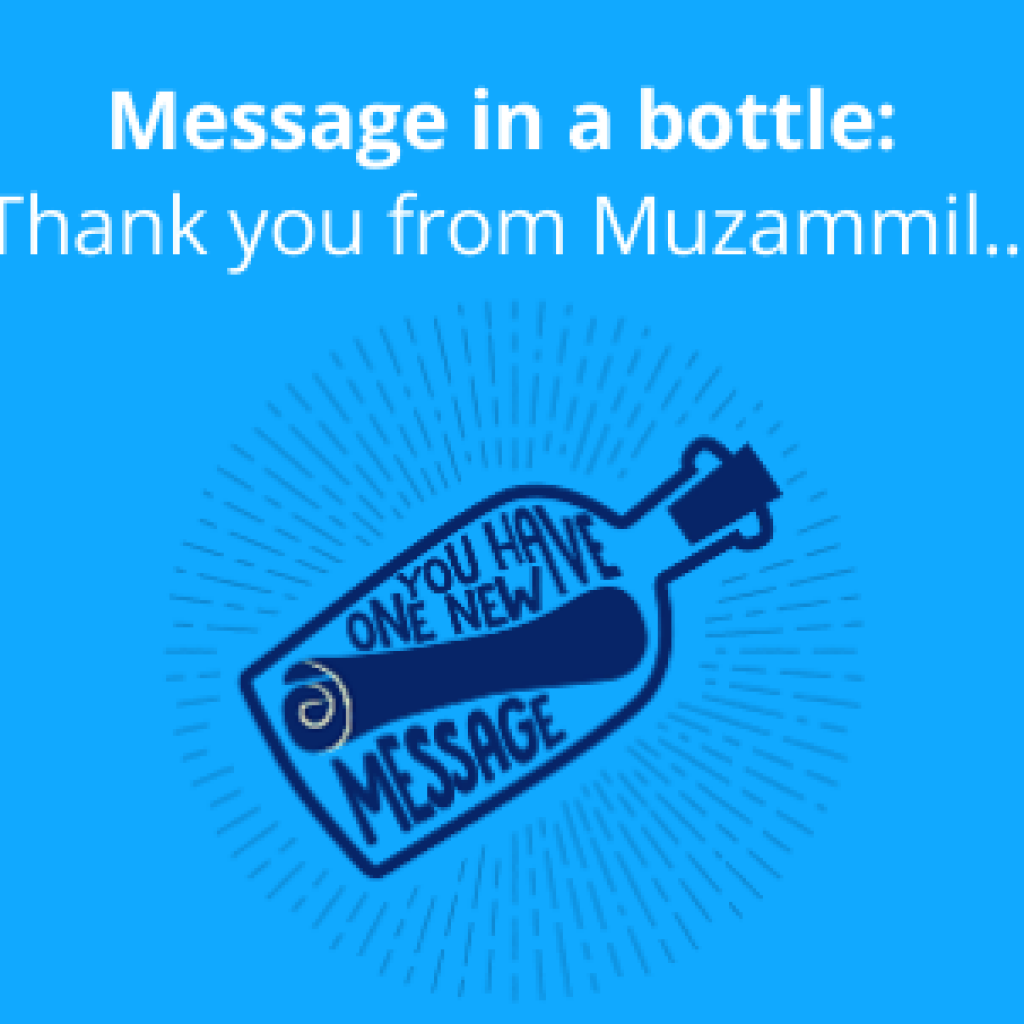How do you like your tea? With cream? Sugar? Or the classic, plastic. That’s right, environmentally detrimental glue and plastic. Allow me to spill the tea.
Tea lovers sing many a praise of those green leaves which are rich in antioxidants and lowers heart failure risk. But little do they know that the tea bags we all use shed tiny pieces of plastic (microplastic) in our hot seemingly comforting cups of tea.
Most teabags contain up to 25% plastic. A study conducted by Canadian researchers revealed that a plastic tea bag at brewing temperature (95°C) releases around 11.6 billion microplastics in one cup. That is a lot of plastic!
Microplastics are shockingly also found in our food and water. A study suggests that we ingest a credit card’s worth of plastic each month. While that is worrisome, what’s more frightening is that the above-mentioned teacup contains more microplastic than our apparent usual intake.
What can we do about it?
Well, we as tea drinkers can avoid tea bags for starters and buy loose tea with tea infusers (which you can easily find online).
But if you’re a tea bag person like me, you don’t have much to worry about. There are a few alternatives to plastic tea bags, which we have listed below along with the companies that use them and the properties their products retain.
Solutions Companies are using for Plastic Free Tea Bags
Cornstarch
Cornstarch was discovered in 1840 by Thomas Kingsford who was a superintendent of a wheat starch factory in New Jersey.
It is a starch that is obtained from the corn grain.
Initially, it was used for starching laundry and other industrial uses but now it’s widely being used as a thickening agent, for medical purposes, manufacturing bioplastics, and for packaging applications, especially in food packaging.
Not only is it available in abundance but is also very affordable, contrary to Synthetic polymer materials which are produced from petroleum. This means hiked prices of petroleum result in hiked prices of the polymer. Not to mention that petroleum is an exhaustible resource.
Biodegradability: There’s some debate about the biodegradability of cornstarch. Some claim that it is a biodegradable material as if disposed correctly, under certain circumstances cornstarch will break into carbon dioxide and water eventually. The circumstances being the presence of enzymes like Proteinase K, which can catalyze the hydrolytic decomposition of cornstarch. But, if not disposed correctly, cornstarch may take years to decompose especially if no light or oxygen is available. However for this very reason, many believe that cornstarch is degradable and not biodegradable since Proteinase K is rarely available in nature.
Companies that are using Cornstarch
1. Teapigs
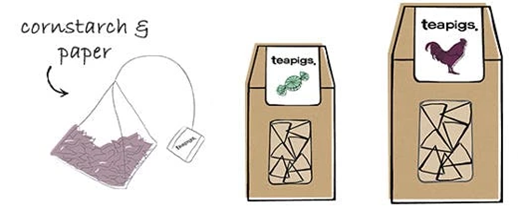
Teapigs is one of the companies that have been using cornstarch for manufacturing their pyramid shaped tea bags which they refer to as “tea temples”. Their biodegradability isn’t limited to the cornstarch-based temples. The string that attaches temples to tag is also made of cornstarch. The tag is made of paper and the ink used on the label is vegetable-based, making the product fully biodegradable.
They finally seal the deal, and everything else with heat, which means no glue.
And the inner plastic-like bag is not plastic but is a wonderful material called NatureFlex made by Futamura by converting renewable air pulp into airtight packaging.
In May 2018, Teapigs became the FIRST tea brand to be awarded the Plastic Free Trust Mark – for plastic-free packaging.
Properties:
 2. Abel and Cole
2. Abel and Cole

Abel and Cole produce tea bags among other organic products. They boast completely plastic-free tea bags and packaging. Their tea bags are made from Soilon a bioplastic made from lactic fermentation of glucose derived from cornstarch.
It is completely biodegradable and only takes a month to degrade. The packing in which the tea bags come in is made from paper which is biodegradable. To add to the list, they are glue-free as they use heat for sealing their products.
The material is also certified by The Soil Association through EU organic regulation.
Properties:

3. Ahlstrom-Munksjö
In July 2018, the Finland-based company announced an investment of EUR 28 million for biodegradable and compostable solutions to attract tea and coffee markets.
Ahlstrom-Munksjö has developed a technology called Fiber+ using polylactic acid (PLA), a renewable biopolymer, for their teabags. They used the same material in BioWeb® which they called the tea industry’s first spun-bond web.
BioWeb® filter’s unique non-woven web is visually different to wet-laid products. They also claim that the filter gets the most natural taste out of the tea bags.
It’s based on 100% renewable raw materials and is certified by DIN CERTCO.
Properties:
 Abaca
Abaca
Abaca which is also known as Manila hemp is extracted from Banana Leaves and is native to the Philippines and humid tropical areas. Because of its exceptional tensile strength, it is used by the paper industry for tea bags, banknotes, and decorative papers. It can also be used to make handcrafts like bags, carpets, and clothing.
As per the 2014 report, the Philippines is the world’s largest provider of Abaca fiber with a share of 87.4%. The rest of the shares were provided by Ecuador and Costa Rica with 12.5% and 0.1% respectively.
Biodegradability: In an experiment, water was poured on a sample of abaca fabric to test its biodegradability in which it started degrading after 2 months. The reason behind hemp’s high tensile strength is that it largely consists of silica (sand). This results in a tough yet biodegradable material.
Companies that are using Abaca
1. Clipper
Clipper takes pride in producing unbleached and plastic-free tea bags. Their tea bags are made of abaca with some plant cellulose fibers generated using unbleached and non-genetically modified papers which the company claims to be the world’s first.
For sealing they opt for heat instead of glue. Their outer packaging also consists of plant-based materials. You can throw the tea bags along with the packaging with food waste or compost.
In 2018, after many trials, the company was able to shift all the production over to the new paper.
Properties:
2. Pukka
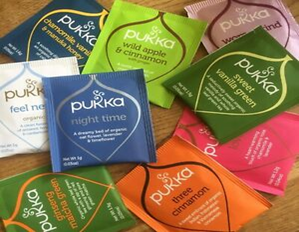
Pukka Herbs uses a simple yet efficient way of packing their tea bags. They use abaca for their tea bags which they simply stitch with threads of organic cotton (non-bleached) instead of staple pin and the company considered the world’s first to do so. In an effort to make sustainable packaging they print their products with vegetable ink.
Properties:
Wood Pulp
Wood Pulp — also known as cellulose fiber — as the name suggests is made from wood or bark of trees to be precise. Wood pulp paper is popularly used as filter paper for tea bags as they share similar properties with engineered fibers, which is why they are also used as chemical filter paper.
Wood Pulp also is known as cellulose fiber, as the name suggests is made from wood or bark of trees to be precise. Wood pulp paper is popularly used as filter paper for tea bags as they share similar properties with engineered fibers that’s why they are also used as chemical filter paper.
Cellulose is also widely used in the textile industry as fiber-reinforcement composites.
Being fully organic, cellulose completely degrades in soil and hence falls under the bio-plastic category.
Cellulose has the upper hand compared to other engineered fibers as it is low in cost and low in density which makes it affordable and easy to transport and carry.
Companies that are using Wood Pulp
Two leaves
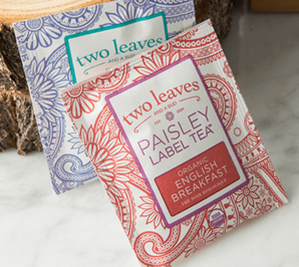
Two Leaves endorses a special Paisley collection in which the tea bags are made from wood pulp. It can be made from multiple types of wood like spruce, pine, fir, aspen, birch, etc. They also claim that their bags are chlorine-free and that they avoid the use of staples for sealing their tea bags.
Half of their teas are wrapped in envelopes that are certified compostable, the other half use a material designed to decompose.
Apart from helping the environment, the wood pulp adds to the taste as the fiber possesses excellent infusion.
Properties:
Cotton Tea Bag
A very popular alternative for sustainable and biodegradable is cotton tea bags. Cotton itself is a very popular material having innumerous advantages. It’s the perfect mix of softness, strength, and flexibility with biodegradability being cherry on top.
Cotton also gives race to its competitors in the field of renewability. Being around for centuries guarantees honed farming practices, perfected over the years.
Companies that are using Cotton tea bags
Hannah Sells Tea
Hannah Sells Tea is an independent company that uses small cotton bags as their tea bags. The England based startup says that these tea bags are reusable. The bags are natural colored being made entirely of cotton, biodegradable.
NatureFlex
NatureFlex is a packaging film developed by Futamura to provide environmentally responsible packaging. The material is derived from wood pulp. The company, Futamura, produces and distributes it to environmentally conscious tea sellers.
The films are fully certified to the American (ASTM D6400) and European (EN13432) norms for 100% compostable packaging. Proven to be suitable for home composting, they are also marine degradable.
The company claims that these tea bags keep tea in premium condition as it possesses a high moisture barrier.
Companies that are using NatureFlex
Due to its several properties, companies are using NatureFlex in their productions for different purposes.
Below is the list of tea providers that use NatureFlex:
- Carrington Teas
- Teapigs
- Able and Cole
- Ecoteas
- Two Leaves and a Bud
- Eteaket
- We are Tea
- Brew Tea Co
- Les Jardins de Gaïa
- Lebensbaum
- Hampstead Tea
- Sappi
- Positivitea
Other Solutions to Plastic Tea Bags
US7905985B2 – Glatfelter
Problem stated– When filter bags dispose of a compost heap or a biowaste bin, depending on some parameters such as temperature, moisture, microorganisms, etc., the natural fiber component of the filter bag will get disintegrated and become biodegraded, whereas the thermoplastic polymeric fibrous network remains intact. Further, it’s impractical to separate the natural fiber component from the thermoplastic polymeric component.
Solution – The patent discusses that by adding specific lubricants, an amount of 0.5% to 5% weight of the ready filter, the aforementioned problem can be overcome. Specifically, they are aliphatic or partly aromatic polyesters.
EP3067455A1 – Nonwoven Network LLC
Problem stated– With the significantly improved fabrics, there still exists a need to increase the elongation of non-woven fabrics to enhance moldability. Also, there is a need to reduce overall costs by avoiding the process of making low melt fibers.
Solution – The patent discloses a non-woven web for producing pouches and bags with Polylactic Acid (PLA) fibers for creating a non-woven web through dry thermo-bonding. The PLA fibers have a crystalline portion and an amorphous PLA powder is added to PLA fibers to act as an adhesive for binding the PLA fibers together. Thus cost is saved by not needing the PLA amorphous to be extruded into a fiber but act as an adhesive.
KR101233310 – Daesang
Problem stated – The process of making tea bag ash is too long and if there is a faster solution, it makes the tea taste bitter or less convenient to drink. So, the patent solves the problem of making tea bags and to make it capable of rapid extraction and eco-friendly as well.
Solution – In the patent, it discusses the ingredient and the amount of the ingredients to make tea bags compositions which would be extracted rapidly and have the properties of eco-friendly at the same time.
Conclusion
As sustainability is the key goal of many industries, companies are opting for more eco-friendly solutions than endangering the environment.
Many tea trading companies have also shifted their production to plastic-free solutions but there are many companies around the globe who are trying to shift or thinking to shift their production. But as there are many alternates of plastic, they might face a dilemma to choose the best solution which would work for them?
To solve the problem to some extent we have provided the SWOT analysis of one of the major alternatives which can help a company to choose whether an alternate plastic solution works best for them or not.
Here is the SWOT Analysis of PLA Properties.
Authored by: Oorja Pandya, Research Analyst, Market Research.


